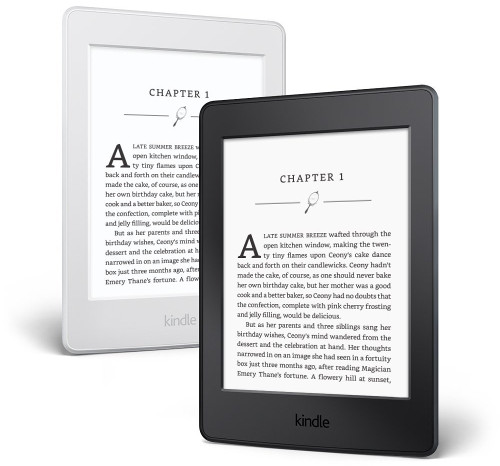There are some common misconceptions when it comes to identifying exactly what a Kindle is or isn’t, so let’s clear things up today before the semantics police start dropping expletives.
Amazon caused part of the Kindle identity problem themselves.
In 2014 they removed the Kindle brand name from their tablets with the release of the 4th gen models.
Up until then they had all been called Kindle Fire tablets.
Understandably, most people didn’t get the memo about the name change so a lot of folks still call Fire tablets Kindles.
We’re now at the 6th generation of Fire tablets, so for half of their existence they were referred to as Kindles. Attempting to rebrand a product halfway through its run is bound to cause confusion.
However, a separation between the two was needed because a Kindle ereader and a Fire tablet are two very different devices. Calling a tablet a Kindle takes away from what a Kindle really is and how it’s unique. It’s like grouping phones and calculators together just because a phone has a calculator on it.
The strict definition of a Kindle means it is a dedicated ebook reader with an E Ink screen, not a multi-purpose tablet with an LCD screen. There’s a huge difference.
Furthermore, Kindle is a specific brand of ereader designed and distributed by Amazon.
That’s an important detail because another common myth is that all ereaders are Kindles.
Anybody who has owned a Kobo, Sony, Nook, or other brand of ebook reader and reads in public knows that if somebody asks about their device, 9 times out of 10 the person is going to automatically assume it’s a Kindle.
Kindles have been so popular for so long that it’s not surprising for the name to start becoming the standard for all ereaders, especially with such a lack of competition in the dedicated ebook reader market.
Who knows, ten years from now all ebook readers might be Kindles, like how VHS became the standard over Betamax. Or maybe ten years from now E Ink won’t exist anymore and the idea of what a Kindle is will change. But for now a Kindle has to have an E Ink screen and come from Amazon to be a true “Kindle”.


All Hoovers aren’t Hoovers.
Please Xerox this for me 🙂
This can change. In the 1970s, every motorcycle was a Honda. Now it is a Harley. (This of course refers to the US market only.)
So that means I have to call my Kindle Fire 5th generation a Fire? Like in, Honey, would you hand me my Fire?” Or do I just call it a tablet? And he has a 4th generation Kindle Fire. Is that a Kindle? Or a Fire. Peculiar. But Barnes & Noble are even worse when it comes to their Nooks.
Yeah, technically those models were never called Kindle Fires. 😀 It was just Fire HD, Fire HDX, etc. The names are listed on the software updates page, and you won’t find the Kindle label on any of the product pages for those models either. It’s funny because most people didn’t notice the change but I had to keep the names straight for reviews and such.
I have an original Kindle DX that is still “working” but not used in years.
My iPad has kindle software.
To me, the iPad (and my windows desktop) function as kindle readers.
My wife FINALLY acquired a fire and Loves it for reading only. She also has an iPad, but will not install kindle software.
So what is a “kindle”? Any device capable of running kindle reading software.
In the end, Kindle is just a brand name, that Amazon uses, and according to this article Kindle has been used as a brand name with three different things: e-readers, tablets, and reader software.
In my mind, when someone says “Kindle”. I think of the e-reader devices.
I do like that the word “Kindle” and “Fire” are both related by the fire theme.